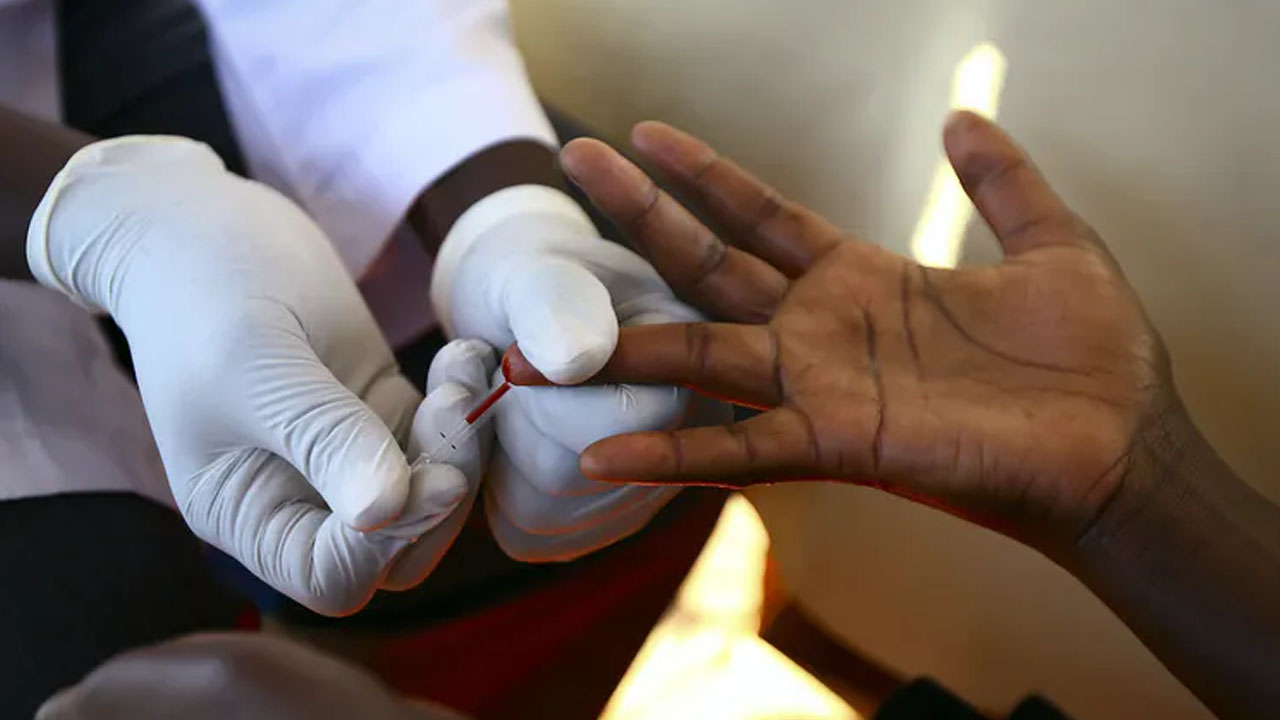*Tobacco plain packaging improves public health by reducing consumption, exposure to smoke, says WTO
*Global forum seeks access to appropriately regulated safer nicotine products for people who quit smoking
In recent times, there have been claims and counterclaims on the association between the use of tobacco, smoking, nicotine and the severity of coronavirus disease 2019 (COVID-19).
Some studies suggest that nicotine may play a role in combating COVID-19 and people who smoke may be at lower risk from contracting the virus while others identified smoking and nicotine as risk factors for COVID-19.
Unfortunately, different studies find conflicting patterns. And in those that find less COVID-19 infection in people who smoke, it is unclear if this is because of a genuine effect or because of issues with analyses or reporting.
Undoubtedly, tobacco cigarettes are uniquely deadly, according to the World Health Organisation (WHO), killing one in two regular users. Until now, most countries all over the world have banned smoking in public places and the popular advice is, “smoking is dangerous to your health… smokers are liable to die young.”
Researches indicate that most deaths due to smoking result from respiratory diseases such as lung cancer, chronic obstructive pulmonary disease and pneumonia. In Nigeria, most cities including Lagos have outlawed smoking backed with legislation but poor enforcement has been the pitfall. People still smoke in public places in all the nook and crannies in the country, exposing the non-smoker and tender ones to secondhand smoke, which has also been associated with cancer of the lung and other ill-health effects.
According to the WHO, the tobacco epidemic is one of the biggest public health threats, killing more than seven million people a year. There are currently one billion smokers worldwide, with nearly 80 per cent of them living in low and middle-income countries, where the burden of tobacco-related illness is greatest.
Indeed, several studies have shown that smoking tobacco is the most harmful way of using nicotine, with the tars and gasses in cigarette smoke being harmful to health, however, many people find it difficult to stop smoking because they find it hard to go without nicotine.
In fact, the controversy topped discussions, last week, at the Global Forum on Nicotine (GFN). Organisers described the 2020 theme as: “Nicotine: science, ethics and human rights” and “advances in the science of nicotine, alongside…ethical and moral arguments…as well as human rights issues that are of significant concerns for consumers and those who advocate for rights to health”.
The participants including scientists and experts in public health and tobacco control highlighted the need for 1.1 billion smokers, and millions of adults who switched away from smoking, to access appropriately regulated safer nicotine products such as vapes (e-cigarettes), Swedish snus, nicotine pouches and heated tobacco products, an approach called tobacco harm reduction (THR).
The seventh yearly GFN was held online on Thursday and Friday, June 11 and 12, 2020 due to COVID-19 pandemic. The event was first held in 2014 and has been held since in Warsaw, Poland.
Thirty experts spoke on a diverse range of topics related to nicotine, including the latest evidence on the interplay between nicotine, smoking and COVID-19; the impact of the deliberate and continued misattribution of the so-called ‘EVALI’ lung-injury crisis to nicotine vaping instead of illicit THC; moral panics over low youth vaping rates taking precedence over the health of millions of adult smokers and vapers and Big Philanthropy’s effect on global public health.
EVALI (e-cigarette or vaping product use associated lung injury) is an inflammatory response in the lungs triggered by inhaled substances. Tetrahydrocannabinol (THC) is one of at least 113 cannabinoids identified in cannabis/marijuana. THC is the principal psychoactive constituent of cannabis.
The yearly conference was organised by London-based Knowledge Action Change Limited (KAC), which is headed by Professor Gerry Stimson. Also, to settle the confusion, researchers at the University of Oxford said they would be conducting the most extensive study to date linking primary and clinical data for the assessment of associations between smoking status and the severity of COVID-19.
“This representative population sample will, to our knowledge, present the first comprehensive examination of the association between smoking, nicotine use without smoking, respiratory disease, and severity of COVID-19,” wrote Julia Hippisley-Cox and colleagues.
A pre-print version of the protocol was published by medRxiv, while it undergoes peer review. However, the WHO has cautioned that nicotine may not prevent coronavirus infection.
Urging researchers, scientists and the media to be “cautious about amplifying unproven claims that tobacco or nicotine could reduce the risk of COVID-19”, the WHO on May 11 issued a statement saying there is “insufficient evidence to confirm any link between tobacco or nicotine for prevention or treatment of COVID-19”.
“A review of studies by public health experts convened by the WHO on April 29, 2020 found that smokers are more likely to develop severe disease with COVID-19, compared to non-smokers,” the WHO said.
The global health body added: “COVID-19 is an infectious disease that primarily attacks the lungs. Smoking impairs lung function making it harder for the body to fight off coronaviruses and other diseases. Available research suggests that smokers are at higher risk of developing severe disease and death.”
MEANWHILE, according to a report published in The Conversation, even if smoking proves protective against COVID-19, no one would ever suggest starting smoking or continuing to smoke to reduce risk. But if something in cigarettes could be protecting people who smoke against COVID-19, there would be a reason to explore this further to see if the useful component could be delivered more safely. The most talked-about candidate so far is nicotine.
Nicotine is what makes cigarettes addictive, but it does not directly cause the many diseases that affect people who smoke and those around them. Nicotine has a bad name, which is warranted when considering that more than eight million people die because of tobacco addiction each year. Yet this bad name is not warranted when it comes to nicotine replacement therapy, which delivers nicotine without all of the other harmful components of cigarette smoke.
More than a hundred randomised controlled trials have tested nicotine replacement therapy as a way to help people quit smoking, and there is strong evidence that it is safe when used as intended. In fact, the WHO considers nicotine replacement therapy an essential medicine.
Nicotine has also been shown to demonstrate immunomodulatory effects that reduce disease severity in animal models of pancreatitis and peritonitis; it reduced immune cell influx and levels of pro-inflammatory cytokines – factors that may be relevant to COVID-19.
Nicotine has been shown to be protective in a handful of other diseases, and laboratory studies suggest it may play a part in regulating an enzyme called ACE2, which is thought to be involved in COVID-19.
The cell receptors that nicotine binds to are ones that Severe Acute Respiratory Syndrome Coronavirus type 2 (SARS-CoV-2) is also thought to affect. Some scientists speculate these links mean nicotine would lead to worse COVID-19 outcomes. Others speculate the opposite. Until tests are done in humans, it is impossible to know for sure.
Early studies in Wales and France are testing nicotine replacement therapy as a potential treatment for COVID-19, and more trials may soon be underway. It has also been suggested that studies currently testing nicotine replacement therapy for other conditions, such as a United States (U.S.) study looking at nicotine replacement for reducing cognitive impairment, could look at COVID-19 outcomes as well.
Meanwhile, Moira Gilchrist, who represented Philip Morris International (PMI) at the GFN, presented how the company is transforming and the objective to replace cigarettes, advocating for the role of industry in the THR arena.
Fiona Patten, Australia, Member of the Victorian Parliament’s Legislative Council, spoke on the need for policymakers to be informed and equipped with scientific facts and data so they can implement science-driven policies.
John Oyston, from Canada, spoke on the importance of a patient-centred approach and the need to avoid stigmatising smokers. Former Director of Leicester City Stop Smoking Service, United Kingdom (UK), Louise Ross, spoke on the public health benefits of THR and the need to be pragmatic (as opposed to dogmatic) when it comes to vaping products.
A social scientist, tobacco harm reduction advocate and Project Manager for THR Malawi, Chimwemwe Ngoma, talked about how his organisation is trying to change the perception on nicotine and tobaccoin a tobacco-growing country such as Malawi.
Indeed, several studies have shown that smoking tobacco is the most harmful way of using nicotine, with the tars and gasses in cigarette smoke being harmful to health, however, many people find it difficult to stop smoking because they find it hard to go without nicotine.
A school of thought suggests that making lower risk products available may help people switch from smoking, ultimately helping avoid the risk of smoking known as “tobacco harm reduction”.
Tobacco harm reduction is a pragmatic approach to reducing the harm of smoking related diseases. People smoke because they are addicted to nicotine and seek a “hit”, but it is the other toxins in tobacco smoke that cause most of the harm. Nicotine can be obtained from a range of products, which vary in their level of harm and addictiveness, from smoked tobacco (that is cigarettes) at the top end of the harm/addiction spectrum, to medicinal nicotine (that is nicotine replacement therapy products) at the bottom end.
A harm reduction approach to tobacco control encourages those smokers that cannot, or are unwilling to, stop smoking, to switch to using nicotine in a less harmful form, and ideally would result in them ultimately quitting nicotine use altogether.
Potential harm reduction products include: Smokeless Tobacco (Snus); E-cigarettes; and Nicotine Replacement Therapy (under construction). The use of safer nicotine products is a rapidly evolving area, with many new non-combustible products emerging. The rapid development and use of these products raises a number of challenging scientific questions about their safety, who uses them and why, and the impact on smoking. These products also raise challenges for governments who seek to understand what kind of policy and regulation is appropriate.
Meanwhile, the World Trade Organization’s (WTO) Appellate Body, last week, upheld that tobacco plain packaging does improve public health by reducing tobacco consumption and exposure to tobacco smoke. The decision of the WTO Appellate Body was announced and celebrated by the WHO Framework Convention on Tobacco Control (FCTC) as landmark legal victory for public health and a major setback for the tobacco industry.
The Appellate Body ruling finally clears the legal hurdle thrown up in the tobacco industry’s efforts to block tobacco control and is likely to accelerate implementation of plain packaging around the globe.
The WTO Appellate Body, on June 9, reported on the dispute brought by Honduras and the Dominican Republic against Australia: “Australia — Tobacco Plain Packaging.” This decision by the WTO puts an end to the disputes which began in 2012 and saw Cuba, the Dominican Republic, Honduras, Indonesia and Ukraine (Ukraine later decided to withdraw its complaint in June 2015) bring legal complaints regarding Australia’s plain packaging law.
The WHO FCTC Secretariat provided the WTO panel with a joint submission or amicus brief, that gave an overview of global tobacco control, summarized the public health evidence underlying tobacco plain packaging and the relevant provisions of the WHO FCTC and its Guidelines.
Head of the Convention Secretariat, Adriana Blanco Marquizo, said: “This decision represents a landmark victory for global health and a major setback for the tobacco industry. Plain packaging is consistent with international trade law as part of a comprehensive approach to tobacco control that protects people from the harms caused by tobacco.”
Marquizo said the Convention Secretariat recognises the importance of this decision to allow the 182 Parties to the WHO FCTC to implement as agreed, through Article 11 of the Convention, effective packaging and labelling measures and, through Article 13, to undertake a comprehensive ban (or restrictions) on tobacco advertising, promotion and sponsorship, without breaching WTO law.






